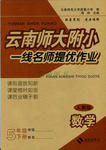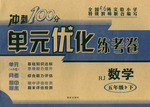
阅读理解
Earth Hour started in Sydney on March 31st, 2007.It calls on families and buildings to turn off the lights from 20∶30 to 21∶30 on the last Saturday night of March. 1 A year later, on March 29, Earth Hour 2008 became a global activity and was supported by 50 million people from thirty-five countries.On March 28, 2010 over 2100 cities in another eight countries took part in it. 2 .
In 2012 in China, there were many cities taking part in this activity, especially some large cities, such as Beijing, Shanghai…Many citizens consciously(有意识的)turned off lights in the hour. 3 In colleges some students held some activities to make all the students leave their dormitories.
It was 20:30, Beijing time. 4 In Shanghai some people were taking a walk with their families or friends.And in Ningbo some young people were holding a party in a park, singing and dancing. 5 .
Earth Hour has a variety of activities, but the final goal is the same, that is focusing on(聚焦)climate change and protecting the environment for individuals.
请根据以上内容,从下列五个选项中选择适当的句子还原到短文中,使短文完整与正确。

 云南师大附小一线名师提优作业系列答案
云南师大附小一线名师提优作业系列答案 冲刺100分单元优化练考卷系列答案
冲刺100分单元优化练考卷系列答案科目:初中英语 来源:2009年江苏省连云港市中考英语试题 题型:050
| |||||||||||||||||||||||||||||||||||||||||||||
查看答案和解析>>
科目:初中英语 来源:江苏省盐城市明达中学2012届九年级下学期期中考试英语试题 题型:050
| |||||||||||||||||||||||||||||||||||||||||||||||||||||||||||
查看答案和解析>>
科目:初中英语 来源:桂壮红皮书活题巧解巧练 中考英语 题型:050
阅读理解:阅读短文,选择正确答案完成句子或回答所给问题。
The size and shape (外型) of your eats show your character (性格) more than any other part of the face. Other parts of the face change shape as we get older, but ears do rat change their shape. They only change in size.
Reading people's character from their ears is a very old science. In the past people thought that a person with big ears had a good character. They thought that a person with small ears in nearly white color was dangerous. They also thought that the shape of the ear showed if a person was musical or not. Today, too, many people believe that the size and shape of the ear help you know if a person is musical.
Ears are all different, and each different thing has a meaning. Next time you look at a person, see if his or her ears are large, medium-size, or small. Look at the lobes(耳垂). Do they stick to the face? Ears that are always red mean that a person may get angry suddenly. Ears that are always cold and in nearly white colour mean that a person has a nervous (神经质的) character.
1.When a baby is born, ________.
[ ]
A.his/her ears are red
B.his/her ears will not change all the life
C.his/her ears will not change in shape
D.he/she will get large ears
2.Reading people's character from their ears is ________.
[ ]
A.only for music
B.an old idea
C.very new
D.a good way to talk with others
3.When one's ears are red, it means ________.
[ ]
A.he is a kind man
B.he is very happy
C.he is angry
D.he drinks too much
4.Each different thing of the ear ________.
[ ]
A.has no meaning
B.has a meaning in character
C.has a meaning in music
D.has changes by itself.
5.If you look at someone's ears, the right way is ________.
[ ]
A.to look at his face, ears and nose
B.to look at the size, colour, shape and lobes
C.to look at his mouth, eyes and nose
D.to look at the hair, eyes and colour
查看答案和解析>>
科目:初中英语 来源:人教新课标初三上册练习 人教新课标 题型:050
阅读理解
Tom Atkins saw an accident between two cars last month. He is a witness(证人) in court(法庭) today. You're going to hear the first lawyer(律师), then Tom , and then the second lawyer.
1st LAWYER :Mr. Atkins, would you please tell the court what you were doing when the accident happened and what you saw?
TOM: Yes. I was driving home from work. It was about fifteen past five, and there was a blue car in front of me. We were both driving along Harbour Road when a small White Ford suddenly shot out of a side road. It shot right in front of the blue car. The driver tried to stop, but it was impossible. He ran into the White Ford.
1st LAWYER: I see. Now, how fast was the ear in front of you going when the accident happened?
TOM:The blue ear? 30 miles an hour. Certainly no more than that.
1st LAWYER: And the White Ford shot without any warning?
TOM : No.
1st LAWYER :Thank you, Mr. Atkins.
2nd LAWYER: How can you be sure the blue car was doing 30?
TOM: Because I was doing 30, and the blue ear was not going any faster than I was.
2nd LAWYER :Are you sure of that, really?
TOM: Yes, I am. Really.
2nd LAWYER :Really? How can you he so sure, Mr. Atkins? Were you looking, at your speedometer(计速表) when the accident happened?
TOM: Of course not. I was looking at the road ahead. That was how I managed to the accident.
2nd LAWYER: Well, if you weren't looking at your speedometer, how can you possibly be sure how fast you were going?
TOM: Because I never go faster than 30 on that road. It's against the law. That's why.
(1) Tom was driving ________.
[ ]
A. in front of the White Ford
B. behind the blue car
C. between the two ear
D. after the two ears
(2) The White Ford shot right_________.
[ ]
A. between Tom and the blue car
B. behind the blue
C. in front of the blue car
D. in front of TOM
(3) Tom was looking ________ when the accident happened.
[ ]
(4) When the accident happened Tom Atkins was driving
[ ]
(5) The second lawyer is defending(辩护)
[ ]
A. the White Ford's driver
B. the blue car's driver
C. Tom
D. nobody
查看答案和解析>>
科目:初中英语 来源: 题型:050
阅读理解
Tom Atkins saw an accident between two cars last month. He is a witness(证人) in court(法庭) today. You're going to hear the first lawyer(律师), then Tom , and then the second lawyer.
1st LAWYER :Mr. Atkins, would you please tell the court what you were doing when the accident happened and what you saw?
TOM: Yes. I was driving home from work. It was about fifteen past five, and there was a blue car in front of me. We were both driving along Harbour Road when a small White Ford suddenly shot out of a side road. It shot right in front of the blue car. The driver tried to stop, but it was impossible. He ran into the White Ford.
1st LAWYER: I see. Now, how fast was the ear in front of you going when the accident happened?
TOM:The blue ear? 30 miles an hour. Certainly no more than that.
1st LAWYER: And the White Ford shot without any warning?
TOM : No.
1st LAWYER :Thank you, Mr. Atkins.
2nd LAWYER: How can you be sure the blue car was doing 30?
TOM: Because I was doing 30, and the blue ear was not going any faster than I was.
2nd LAWYER :Are you sure of that, really?
TOM: Yes, I am. Really.
2nd LAWYER :Really? How can you he so sure, Mr. Atkins? Were you looking, at your speedometer(计速表) when the accident happened?
TOM: Of course not. I was looking at the road ahead. That was how I managed to the accident.
2nd LAWYER: Well, if you weren't looking at your speedometer, how can you possibly be sure how fast you were going?
TOM: Because I never go faster than 30 on that road. It's against the law. That's why.
(1) Tom was driving ________.
[ ]
A. in front of the White Ford
B. behind the blue car
C. between the two ear
D. after the two ears
(2) The White Ford shot right_________.
[ ]
A. between Tom and the blue car
B. behind the blue
C. in front of the blue car
D. in front of TOM
(3) Tom was looking ________ when the accident happened.
[ ]
(4) When the accident happened Tom Atkins was driving
[ ]
(5) The second lawyer is defending(辩护)
[ ]
A. the White Ford's driver
B. the blue car's driver
C. Tom
D. nobody
查看答案和解析>>
湖北省互联网违法和不良信息举报平台 | 网上有害信息举报专区 | 电信诈骗举报专区 | 涉历史虚无主义有害信息举报专区 | 涉企侵权举报专区
违法和不良信息举报电话:027-86699610 举报邮箱:58377363@163.com